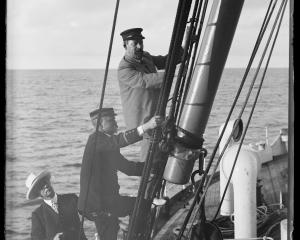
The Otago Deep Water Lakes Technical Advisory Group was formed in April last year to provide advice on potential monitoring and research into the health of Lakes Wakatipu, Wānaka and Hāwea.
The technical advisory group is now seeking feedback from the council’s science and resilience committee on the level of funding for such work before developing a detailed research and monitoring proposal.
A report to be presented today outlines three proposals from the group.
A "substantial improvement in knowledge" would come at a cost of $20m over 10 years, the group said.
A moderate improvement in the knowledge of the lakes would come in about $7m to $12m.
An "incremental increase" in the knowledge of the lakes would cost about $2.5m.
Both climate change and increasing "human pressure" on the lakes were taking a toll, the report said.
"Safeguarding Lakes Wakatipu, Wānaka, and Hāwea is important for New Zealand’s economy and global status as a country that maintains, and profits from, its high-quality environment," it said.
"Unfortunately, little is known about how our large lakes function, their resilience to pressures, or about how to monitor their stressors and responses effectively.
"The level of scientific study and monitoring to date does not correlate to their national importance."
Information about stressors such as sewage infiltration, nitrates, phosphorus, contaminants in stormwater and other pollutants, as well as invasive species and climate change — and the way the lakes responded to these stressors — was required.
At times, a "tipping point" could be identified when a small change in one of the stressors could result in a large change in a lake’s water clarity or the productivity of its fisheries, for example.
"To undertake proactive management of lakes, it is important to know whether there are tipping points in a stressor-response relationship and, if so, how far the lake currently is from a tipping point," the report said.
"This knowledge would help planners determine how much stress the lake ecosystem can tolerate [and] determine safe operating spaces with low risk of degrading the values."
Evidence from overseas showed deepwater lakes could become degraded and due to their size, monitoring, which would alert authorities to impending degradation, was challenging.
"We currently have little information on the specific characteristics of our lakes that may make our lakes either resilient or vulnerable to various stressors," the report said.
The most ambitious proposal from the group would involve a significant improvement in monitoring discharge, temperature, nutrients and sediments in inflows to the lakes.
It would also include biological sampling to understand lake productivity and risks of eutrophication, nutrient cycling, lake food webs, invasive species and the potential for restoring migratory fish to the lakes.
There would be, in addition, climate monitoring, the deployment of satellite buoys, lake monitoring buoys, current meters and benthic chambers, all of which would be used to create 3D models.
The most ambitious proposal also included "sustained investment" in partnerships with the community and cultural monitoring where appropriate, the report said.
An introductory report to the committee, by the council’s science manager Ben Mackey, said if a proposed research and monitoring plan were to be adopted by the council, the way it was funded might require "substantial consultation".











